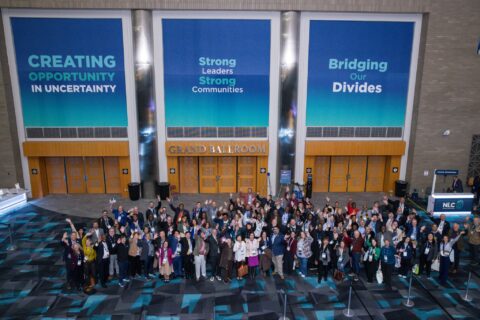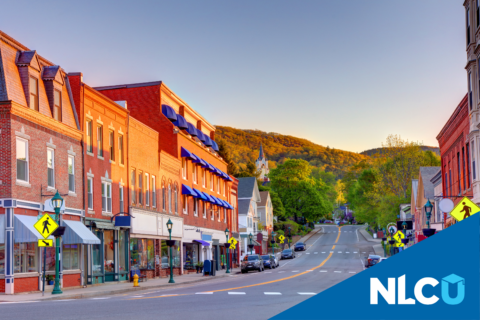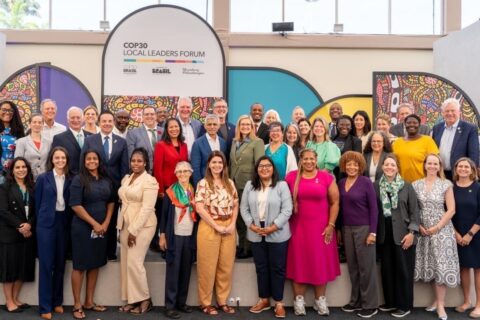Authored by Alyson Trowbridge, Grant Operations Division and Business Development Team, Lexipol
On July 2, 2024, the Federal Emergency Management Agency (FEMA) announced selectees for its Fiscal Year 2023 (FY23) Building Resilient Infrastructure and Communities (BRIC) grant program. The total funding amount for this cycle? Nearly $1 billion, an astronomically high figure far exceeding a vast majority of authorized federal grant programs.
So, what is the BRIC program, and how can communities take advantage of these competitive grant funds?
The BRIC program is one of DHS/FEMA’s Hazard Mitigation grant programs, aimed at proactive community resilience projects with an added infrastructure focus, particularly for disadvantaged communities, projects incorporating climate resilience and nature-based solutions and the adoption of hazard-resistant building codes. The intended uses of BRIC funds are for capability and capacity building activities and mitigation projects, with additional allowable funding uses for management costs. Projects must be designed to increase community resilience and reduce the loss of life, damage/destruction of property and the risk of injuries. Presently, there are four sub-categories within the BRIC program: Building Codes, Partnerships, Project Scoping, and Hazard Mitigation Planning and Planning-Related Activities.
Who can apply?
The program is open to state, local, tribal and territorial (SLTT) governments, although only states, territories and federally recognized tribal governments can apply directly to FEMA.
As a pass-through program for local governments, each State Administrative Agency (SAA) works with and reviews eligible sub-applications from local jurisdictions prior to sending forward their individual state’s recommendations to FEMA for final approval.

With the typical federal timeline being published annually in the fall and closing in early winter (think January/February), most states have sub-recipient deadlines at least 30 to 60 days in advance of when the state is required to submit their application to FEMA to allow time for the state review process. For that reason, it is imperative that eligible sub-recipients start their preparation process early. It is also important to note that individual states may have their own priorities or requirements when reviewing local sub-applications, so coordination with your SAA can be critical to success.
Eligibility
To be an eligible sub-applicant, your community must have a FEMA-approved local or tribal Hazard Mitigation Plan by the application deadline as well as at the time the obligation of funds occurs (time of award). Generally, the cost share for BRIC awardees is 25% in non-federal funding (meaning the grantee can generally request up to 75% of federal funding). Certain community and/or project characteristics can increase that federal share, with FEMA covering 100% of management costs and up to 90% of projects benefiting certain communities, such as those in a designated Community Disaster Resilience Zone or Economically Disadvantaged Rural Community (EDRC).
Challenges
One of the more challenging elements of the BRIC application is the requirement of a Benefit-Cost Analysis (BCA), although planning projects are exempt. The BCA is a methodology to determine whether the intended project includes risk reduction benefits that meet or exceed a 1:1 ratio, essentially a formula to compare present values with the expected net benefits that are anticipated to result from the requested mitigation efforts. For more information on the BCA, including training and FEMA’s BCA Toolkit to perform an analysis of your project’s cost-effectiveness, access FEMA’s BCA landing page.
FEMA’s BRIC program is a challenging discretionary grant program that sub-recipients should approach with thoughtfulness, careful planning and strategically prioritized projects. However, it also presents a significant opportunity for communities to enhance their resilience against natural disasters and ultimately safeguard their future. By conducting thorough risk assessments, engaging with key stakeholders and developing comprehensive project proposals in alignment with BRIC’s objectives, communities can be well-positioned for success and empowered for a more resilient tomorrow.
Connect with Lexipol on Grant Services
As the National League of Cities’ exclusive grant services provider, Lexipol offers NLC members exclusive discounts, including 25% on grant writing services.










